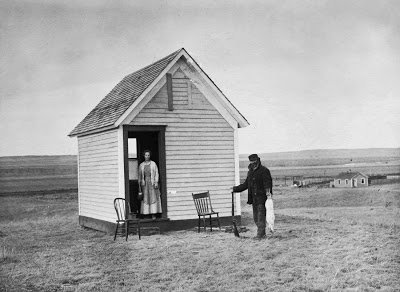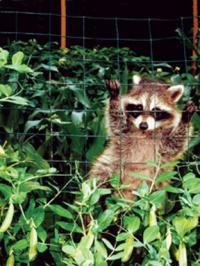 Two years ago I did a “1/4 acre homestead” talk at the Maker Faire at the San Mateo County (Calif.) Event Center). This time around, I have a lot more material, plus URLs on all the tools I’m going to show. I’ll be doing a presentation on the Maker Faire Stage, at 2 PM on Saturday, May 18th, and at 2 PM Sunday, May 19th. Information on the Faire: https://makerfaire.com/. Reviews of the Faire: https://www.yelp.com/biz/maker-faire-san-mateo.
Two years ago I did a “1/4 acre homestead” talk at the Maker Faire at the San Mateo County (Calif.) Event Center). This time around, I have a lot more material, plus URLs on all the tools I’m going to show. I’ll be doing a presentation on the Maker Faire Stage, at 2 PM on Saturday, May 18th, and at 2 PM Sunday, May 19th. Information on the Faire: https://makerfaire.com/. Reviews of the Faire: https://www.yelp.com/biz/maker-faire-san-mateo.
I’ll be showing slides of our homestead, and the various tools we use around here in the kitchen, garden, and shop — from 40+ years’ experience. I’ve picked the tools I think are unique and maybe not so well known, and left off all the ones that I think people may already know about. We’ve posted the URLs on our website here: https://www.shelterpub.com/_homestead/tools.html and I’ll be passing out cards with a QR code so people in the audience so they can check out any of these tools when they get home. I’ll also have copies of our Tiny Homes mini book (2″ x 2″) to give out.
Lew and Evan will be manning a booth (#4925) in the Expo Hall. This is the largest hall, and our booth is at the back. We’ll be showing the process we use in producing books, including the first draft layout pages done with scissors and scotch tape. We’ll also be selling copies of our building books, and giving away mini books.
Photo: draining dish rack in our kitchen built (20 years ago) by Lew Lewandowski
Tags: building, communication, cooking, farming, fishing, food, foraging, gardening, homesteading, salvaged materials, small homes I first heard the phrase from a friend who went to work for a hot new company during the tech boom. Well, uh, OK. But in spite of its dorky sound, it has real meaning for someone like me.
I’m all over the place. Can’t help it. Always have been. Everything in this world is just so daggone interesting. Especially now. I think I appreciate the computer more than younger people because of where I come from. It’s such a breath-taking span from hot lead type to InDesign, from bulky dictionaries to Google, from rotary phones to the iPhone 5. (Part of my excuse for being so eclectic.)
Back to leveraging: I’d like to sell more books, I’d like to get us more income so we can get out of the 40-year-old scrambling for $$ to pay the printers. I had an idea: to take targeted sections of this blog and turn them into eBooks. Say homesteading. For people interested in homesteading, but not necessarily in Muddy Waters or skateboarding.
You homesteaders and gardeners out there: would you pay $2.99 or $3.99 for an ebook based on a selection from my homesteading posts? Go down on the far right column and under “Topics,” click on “homesteading.”
I don’t know about a print book. It could be done but might cost too much.
I’ve put up over 3500 posts now. Does it make sense to separate this mass into subjects and reach “targeted” audiences?
“’Our potencies here are off the scale,’ confirms longtime grower Todd Ellison, co-founder of Colorado Marijuana Marketing, a one-stop shop for weed-related entrepreneurs in search of marketing help. ‘I have a guy who taught me to grow, who has been growing since the ’60s. And this stuff blows him away.’ And Ellison agrees. ‘I am almost 40. I’ve got three kids. You don’t want something that is going to lay you out and make you stupid all day.’
Why is dope so strong? Because plants with big, strong buds maximize the profit of the basement grower. Plus, the people who grow it and sell it also smoke it, and they’ve got high tolerances and a deep fondness for its effects. They like it strong.…
…newbies and those who have been burned by strong weed have a few options. They can make sure that the marijuana they are buying is mostly Cannabis sativa rather than Cannabis indica. Sativa is said to be more cerebral, more placid. Indica, on the other hand, is known for inducing what industry insiders refer to as ‘couch lock.’ If you are in your 40s or 50s, the dope you smoked in high school was probably sativa. ‘Most of this country, people over 40, the fond memories we have of way back when, when pot made you want to play the guitar and dance in the field, were of sativa,’ says Kyashna-tocha. ‘We were importing from tropical places. But then we started having indoor production. If you grow indoors, you shift to the stuff that is going to maximize production: fast, short, and big impressive-looking buds. That is indica. The shift went to this more stupefying stoned high.…’”
https://www.slate.com/articles/health_and_science/science/2013/03/marijuana_potency_returning_smokers_want_mellower_pot_strains.single.html
 This event is to help this wonderful local food operation stay in business while they are being persecuted by uber-environmental groups such as the West Marin Environmental Action Committee (one of the Tea Party type environmental groups — well financed, politically connected, and heads up their ass), and misrepresented with blatantly false scientific reports by the National Park Service.
This event is to help this wonderful local food operation stay in business while they are being persecuted by uber-environmental groups such as the West Marin Environmental Action Committee (one of the Tea Party type environmental groups — well financed, politically connected, and heads up their ass), and misrepresented with blatantly false scientific reports by the National Park Service.
I heard that a petition with some 50,000 signatures was obtained in favor of closing the operation down. I’ll bet 95% of these were city dwellers and 98% of these people had never been to the farm. My first-hand and native Californian assessment is that is a triple-win food production system, and it will be a tragedy if it is closed own by what the Italians call the talibano dell’ ecologia .
From sananselmofairfax.patch.com: “…If they lose, the Lunnys will be forced to demolish buildings, remove and destroy an estimated $4.5 million worth of oysters, and put 30 people currently employed at the farm out of work.…With thirty full-time workers, many of whom live on the property, the farm is currently the second largest employer in the Point Reyes National Seashore. Oysters harvested from Drakes Bay make up nearly 40% of California’s yearly shellfish production, some 500,000 pounds of oyster meat annually, marketed exclusively in the Bay Area. The farm is also the last operating oyster cannery in the state.…”
Other stuff I’ve written about this in the past here.
 “Olga Wold and her stepfather, Norman Wold, stand outside her homestead shack at Marsh, Montana. Photograph taken on December 28, 1912 by Evelyn J. Cameron.
“Olga Wold and her stepfather, Norman Wold, stand outside her homestead shack at Marsh, Montana. Photograph taken on December 28, 1912 by Evelyn J. Cameron.
”
From: https://freecabinporn.com/
 I got some great comments on my post (below) on trapping rats. I just remembered an article I wrote for Mother Earth News a few years ago on how I deal with rats and other homestead invaders: https://www.motherearthnews.com/Modern-Homesteading/Protect-Your-Home-From-Critters.aspx#axzz2LvooOokH
I got some great comments on my post (below) on trapping rats. I just remembered an article I wrote for Mother Earth News a few years ago on how I deal with rats and other homestead invaders: https://www.motherearthnews.com/Modern-Homesteading/Protect-Your-Home-From-Critters.aspx#axzz2LvooOokH
THE GREEN RUSH
State’s medical marijuana boom is wreaking havoc on some fragile habitats.
December 23, 2012, LA Times, |Joe Mozingo
EUREKA, CALIF. — State scientists, grappling with an explosion of marijuana growing on the North Coast, recently studied aerial imagery of a small tributary of the Eel River, spawning grounds for endangered coho salmon and other threatened fish.
In the remote, 37-square-mile patch of forest, they counted 281 outdoor pot farms and 286 greenhouses, containing an estimated 20,000 plants — mostly fed by water diverted from creeks or a fork of the Eel. The scientists determined the farms were siphoning roughly 18 million gallons from the watershed every year, largely at the time when the salmon most need it.
“That is just one small watershed,” said Scott Bauer, the state scientist in charge of the coho recovery on the North Coast for the Department of Fish and Game. “You extrapolate that for all the other tributaries, just of the Eel, and you get a lot of marijuana sucking up a lot of water…. This threatens species we are spending millions of dollars to recover.”
The marijuana boom that came with the sudden rise of medical cannabis in California has wreaked havoc on the fragile habitats of the North Coast and other parts of California. With little or no oversight, farmers have illegally mowed down timber, graded mountaintops flat for sprawling greenhouses, dispersed poisons and pesticides, drained streams and polluted watersheds.
Read More …
“IT’S becoming clear that we can grow all the food we need, and profitably, with far fewer chemicals. And I’m not talking about imposing some utopian vision of small organic farms on the world. Conventional agriculture can shed much of its chemical use — if it wants to.
This was hammered home once again in what may be the most important agricultural study this year, although it has been largely ignored by the media, two of the leading science journals and even one of the study’s sponsors, the often hapless Department of Agriculture.…”
Article by Mark Bittman, New York Times, Oct. 21, 2012
We had a great day yesterday. North into farmland, to Sebastapol and the Harmony Farm Supply, what a great place. Good tools, good additives, seeds, irrigation, etc. No foul chemical smells. Knowledgeable staff.
Then to the National Heirloom Expo in Santa Rosa. Unique event. Yesterday was the last of 3 days (Tues-Wed-Thurs). Tons of different heirloom fruits, vegetables, cheeses, on and on… goats, sheep, cows, turkeys and a huge display of bantam chickens. Food booths (and samples) up the kazoo. It’s a very together farming, gardening, food preparation and preservation show. Real food and respect-for-earth concepts and practices have come a long way in the last 25 years — progress. I’m going to this for sure next year, and we’ll probably get a booth and sell building books. Our kinda people.
Back through Petaluma and Heritage Salvage, huge amount of recycled lumber, including some stunning old barn timbers.
Got a lot of good pics yesterday, no time to do anything other than this with 3 of them:

This was on back road between Petaluma and Sebastapol.

Real tomatoes

Bantam Silver Spangled Hamburg
raised by Janelle Thope
 Two years ago I did a “1/4 acre homestead” talk at the Maker Faire at the San Mateo County (Calif.) Event Center). This time around, I have a lot more material, plus URLs on all the tools I’m going to show. I’ll be doing a presentation on the Maker Faire Stage, at 2 PM on Saturday, May 18th, and at 2 PM Sunday, May 19th. Information on the Faire: https://makerfaire.com/. Reviews of the Faire: https://www.yelp.com/biz/maker-faire-san-mateo.
Two years ago I did a “1/4 acre homestead” talk at the Maker Faire at the San Mateo County (Calif.) Event Center). This time around, I have a lot more material, plus URLs on all the tools I’m going to show. I’ll be doing a presentation on the Maker Faire Stage, at 2 PM on Saturday, May 18th, and at 2 PM Sunday, May 19th. Information on the Faire: https://makerfaire.com/. Reviews of the Faire: https://www.yelp.com/biz/maker-faire-san-mateo.







